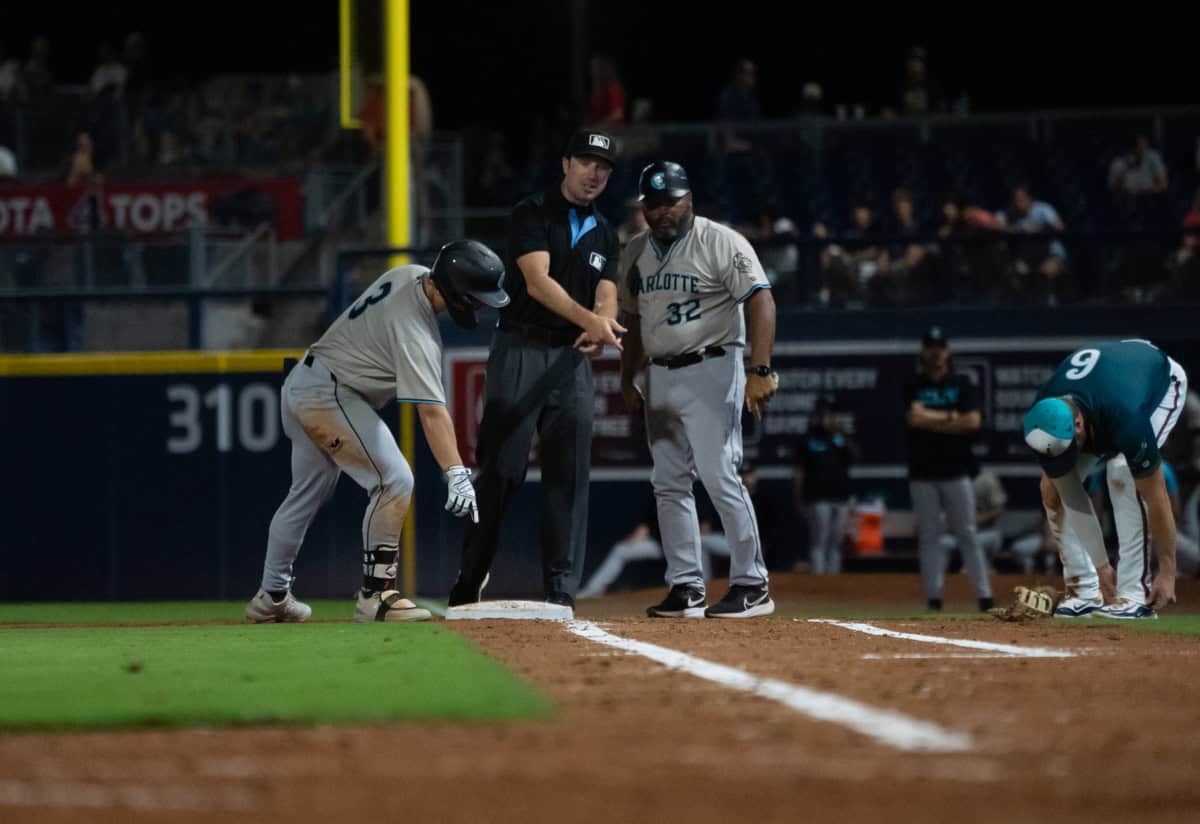NASHVILLE -- About a month ago, Major League Baseball announced that the strike zones for all Triple-A games would be called by home plate umpires, backed up by the automated ball-strike system, which would come into play if and when hitters, catchers or pitchers challenged the call. Previously, half of Triple-A games were called entirely by ABS before switching to the challenge format for the second half of a series.
What's more: MLB reduced the number of unsuccessful challenges a team was allowed to take, from three to two.
I hadn't seen a full Triple-A game played under these conditions until watching five of them at First Horizon Park as the Charlotte Knights rolled through town, and the missing challenge makes a pretty big difference with how teams use them.
"We have a lot of meetings and communication on how we want to go about using our challenges, with only having two," Jirschele told me. "If you lose one early, you're strapped with only one the rest of the game, and if it's a tight game, you always want to try to take at least one into those later innings on the defensive side, especially if you have an early lead.
"It all comes down to on the offensive side, the swing counts, right? Certain counts aren't real swing counts. Like, a 2-0 count isn't really going to get you a whole lot, if you're challenging that Ball 3. It's early in the bat, and a lot can happen from there on too, even if you're pretty sure that you know it was a strike called on, but it was a ball."
Going from three challenges to two makes a detectable difference. Prior to the change, a hitter or catcher could let one fly early in order to learn the boundaries or hope to flip a count with a prayer. Now you see a whole lot more hitters tilting heads and catchers holding mitts in place, whether it's because they're doing the risk-assessment mental math or hoping to influence the zone the old-fashioned way. Players can't use the system for hoping anymore.
"That's the biggest thing we talk about, not getting emotional with it," Jirschele said. "If you get buried in a count one way or the other, you don't want to get emotional just because the game's played out that way. Sometimes you gotta roll with it.
"These challenges are for the team, they're not your challenges individually. These are for the team and we gotta be smart with them and try not to be emotional."
The next day, as Sean Burke dug himself into a first-inning hole he wouldn't escape, both he and Edgar Quero challenged a 2-1 fastball called low. While most challenged pitches are true edge cases, settled by a half-inch or less, this one missed the zone by nearly two inches.
This call was the best example of the enhanced punishment of an unsuccessful challenge. With three challenges, Burke and Quero could take a shot on any borderline pitch in the hopes of rescuing a wayward inning, and the team would still have two bullets left. Here, the challenge didn't pay off, so not only was Burke further down the road to walking five batters and plunking another over two-thirds of an inning, but the Knights had to be extra judicious with their remaining challenge the rest of the game.
After watching five games, I'm comfortable saying I prefer three challenges to two. Fewer challenges jibes with MLB's pace-of-play initiatives, but the extra opportunity gives teams more say in making sure the correct zone is being established, and the game-within-the-game aspect is interesting enough on its own to not feel like it's gumming up the works. If you can't get to a Triple-A game to see the challenge system for yourself, you could see it at the major league level by 2026.
Knights Knotes
*Dominic Leone and Matt Foster made a pair of successful scoreless rehab appearances, so they're in position to come off the 60-day injured list and reclaim their 40-man roster spot if the White Sox are so inspired.
*Corey Knebel is still missing a couple ticks of velocity as he tries to come all the way back from a torn shoulder capsule, but his knuckle curve gave the Nashville hitter fits. He's up to seven strikeouts against just one walk over five hitless, scoreless appearances with Charlotte. Since he isn't on the 40-man roster, the White Sox would be able to trade him in August, if they didn't have a great opportunity for him themselves.
*Tim Elko will change this when he plays his first game for Charlotte, but the Knights had inadvertently been training their infielders to throw to a smaller-than-average target by playing the 5-foot-9-inch Michael Chavis at first base.
*According to Baseball America's park factors, Nashville's First Horizon Park is the third toughest place to homer in the International League, and that certainly checked out this week. The Knights and Sounds only hit one homer between them over five games. Zach DeLoach can claim his prize.
*Bryan Ramos had a strong decent week, hitting .357/.471/.429 over 18 plate appearances, even though he hit into his share of bad luck. The contact was consistently firm, even though he wasn't rewarded by his deepest drives to right field.
*As for Colson Montgomery, he'll require his own post. Consider this a tease.





